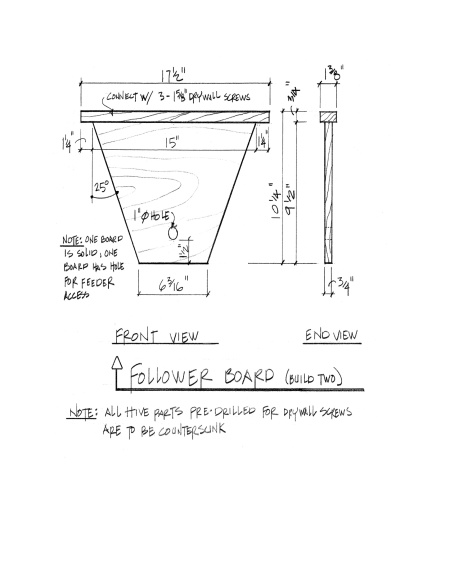Ack! My bees just arrived and it's SNOWING!!! What do I do?
Good question and SO relevant in the Spring of 2018. Here are some ideas for how to deal with hiving bees in cold weather.
The first thing you are working against is this: Cold bees cannot get into a cluster. If you put cold bees into a cold top bar hive, they will fall to the bottom, paralyzed with cold, and be unable to get up into the cluster, and they will die in a heap. But warm bees can cluster, even if it’s cold outside.
So bring your bees inside where it’s warm. Get your hive all prepared to do the install. Get your warm bees, go out to the hive, install them quickly (and calmly). Don't forget to check on your queen and to pull the cork that covers her candy!
They will be warm enough to get up from the bottom of the hive and into a cluster. Yay!
The second issue to resolve is: How/what are they going to eat? If you have honey in the comb - you’re in pretty good shape. Put a bar of honey in, hang the queen cage next to it, hive the bees next to that. Then drawn comb if you have it, then empty space. Because you want them to start at one end and move to the other, you want to put honey next to where you want them to start, since in cold temps, they will have to be able to cluster next to the food. You can always move that honey comb deeper in the hive later after the weather warms up.
If you have no existing combs of honey, as is typical for a first year top bar beekeeper - then feeding your new bees is a bona fide problem. A distant syrup feeder is useless when it is so cold that the bees must be in cluster to survive. Fondant is your friend in this case. It emulates honeycomb, and like a comb, you can put it where the bees can get to it.
In a top bar hive, fondant can be fed in a fondant feeder frame. You make the fondant, pour it into the frame, let it harden, and then hang the frame in the hive next to the location you want them to cluster, next to the queen cage.
How to make a fondant feeder in case of cold and snow - emergency feeding when hiving your bees!
We offer these fondant frames as a Gold Star product, and they work well. But your bees may arrive first, I fear. So, in a pinch, try this:
Take a manila file folder, or a FedEx-type envelope. Fold up the bottom corners to match the shape of your top bar hive. Staple them in place.
Make some fondant. Fill your makeshift feeder with the fondant. Make sure it lays mostly flat, and is of appropriate size - no fatter than the top bar itself and not too large for your hive. Let it harden. Then hang the folder from a top bar, hopefully with flat-headed thumb tacks, or something that doesn’t force the top bars apart (they need to touch, especially when it’s cold). Cut several 2” slits in one side of the folder. Put the fondant folder bar in the hive first, with the slits facing the cluster of bees. Hang the queen cage on the bar next to it, then hive the bees next to that. The bees will strive to cluster around the queen and they will be right next to the fondant.
If you’re using a Langstroth hive, you can make a candy board by filling your inside cover with fondant and putting it in the hive candy side down. This will put the fondant right above the bees, again, where they can reach it without leaving the heat of the cluster. Alternatively you could make fondant and fill a Langstroth frame, and put that in the hive where they bees can reach it.
This fondant recipe makes a very stiff fondant, provided it is made using a candy thermometer to monitor the temperature - the candy thermometer is very important!
For those with Gold Star top bar hives - here are the dimensions of your follower board. Fold the folder so that it matches the size and shape of the follower board, minus 3/8" all the way around the 3 lower edges.
 Bee well. Stay warm.
Bee well. Stay warm.

